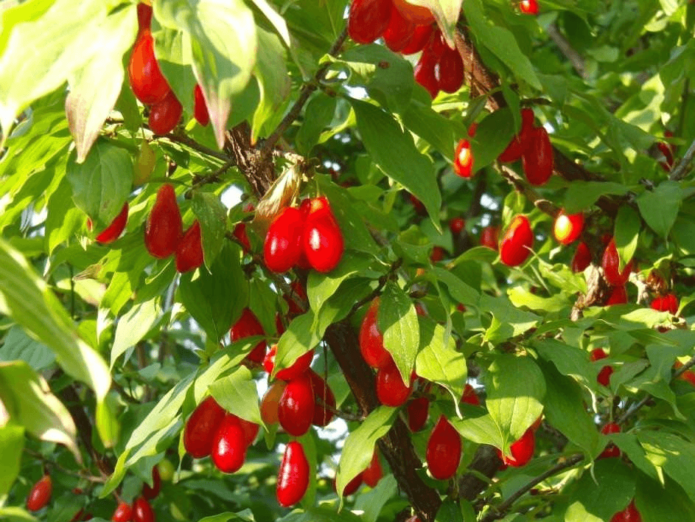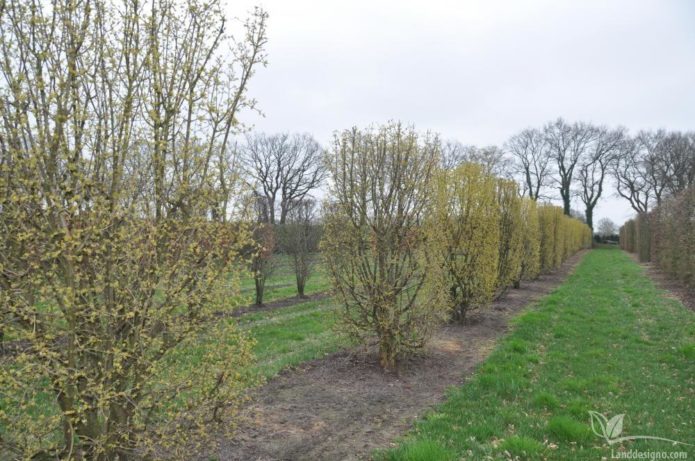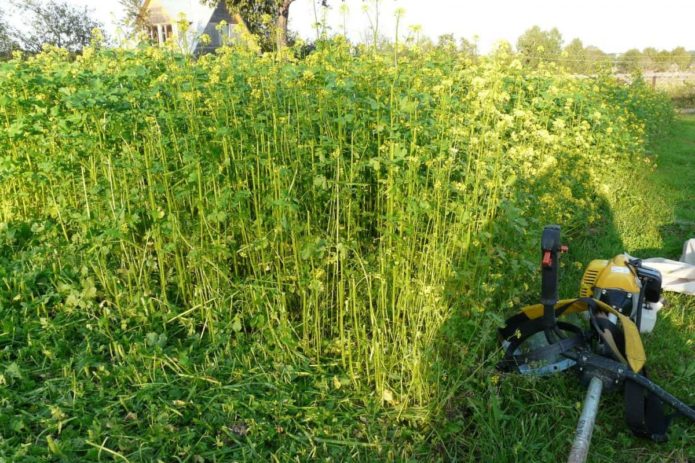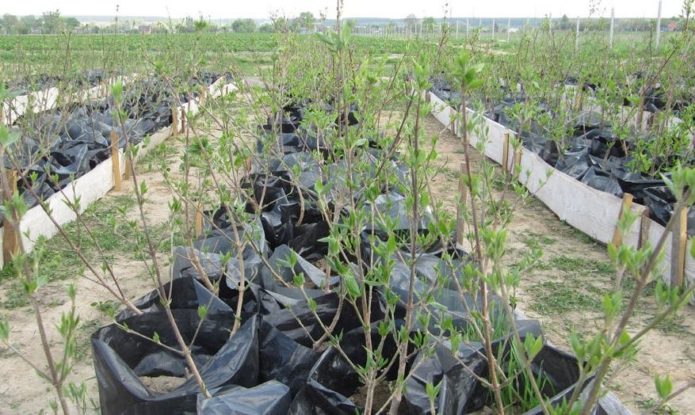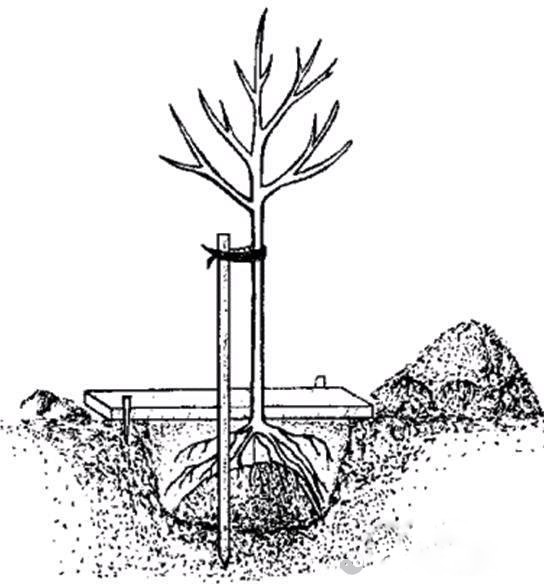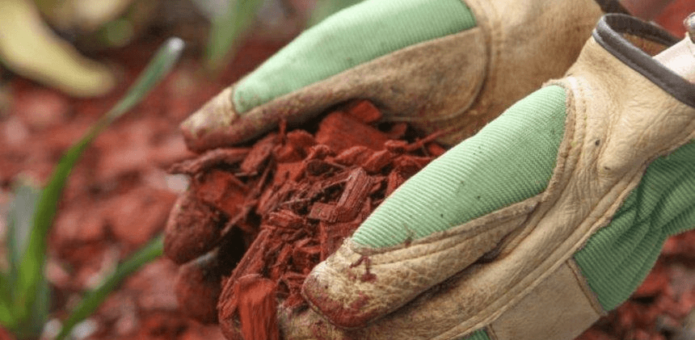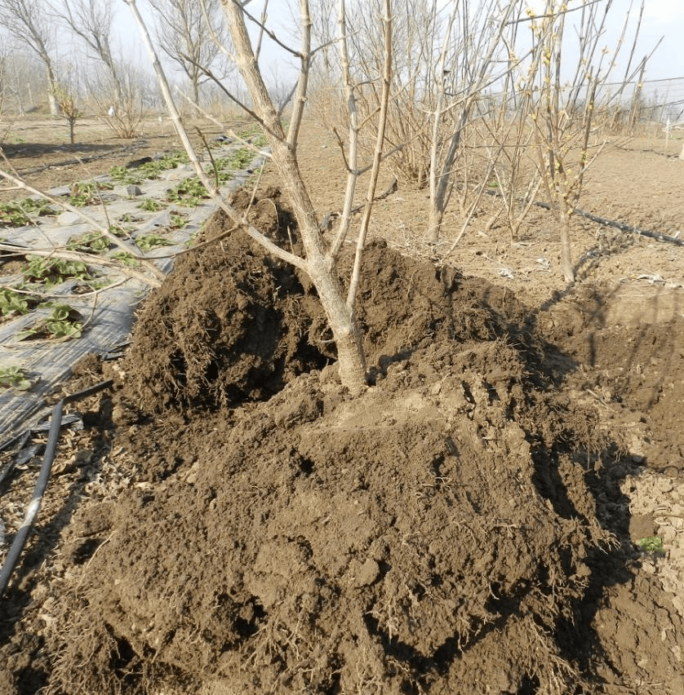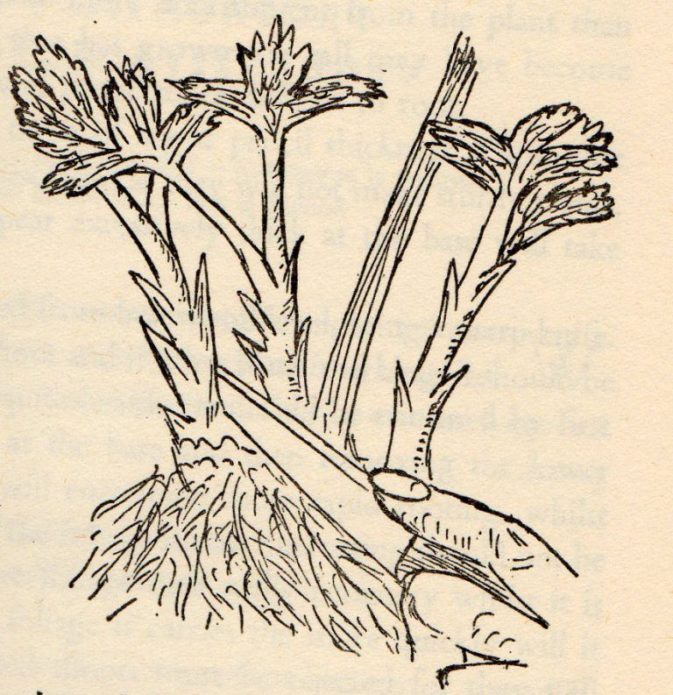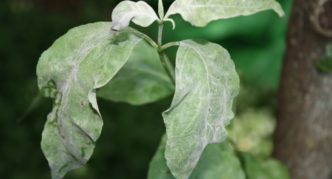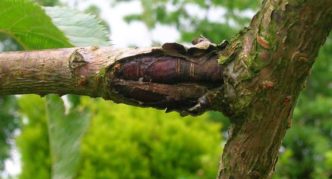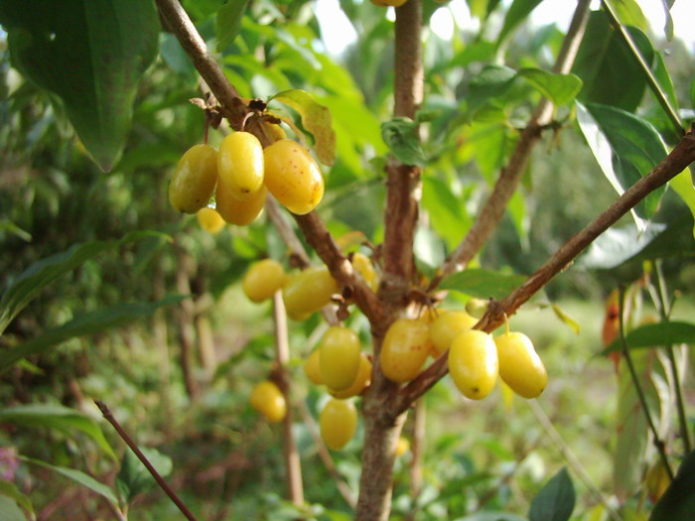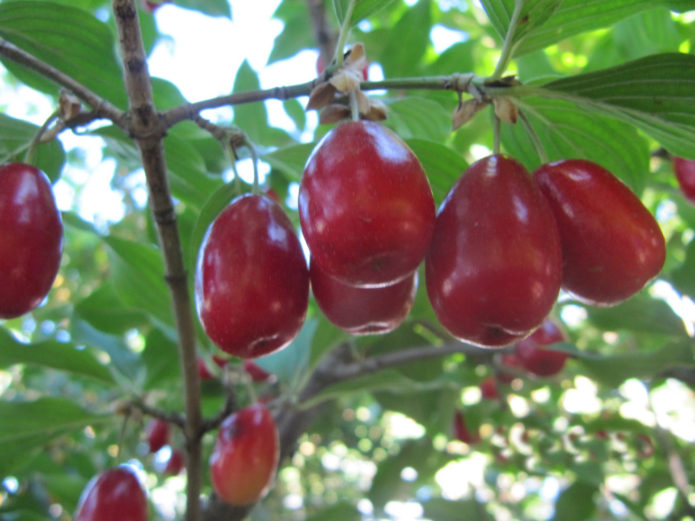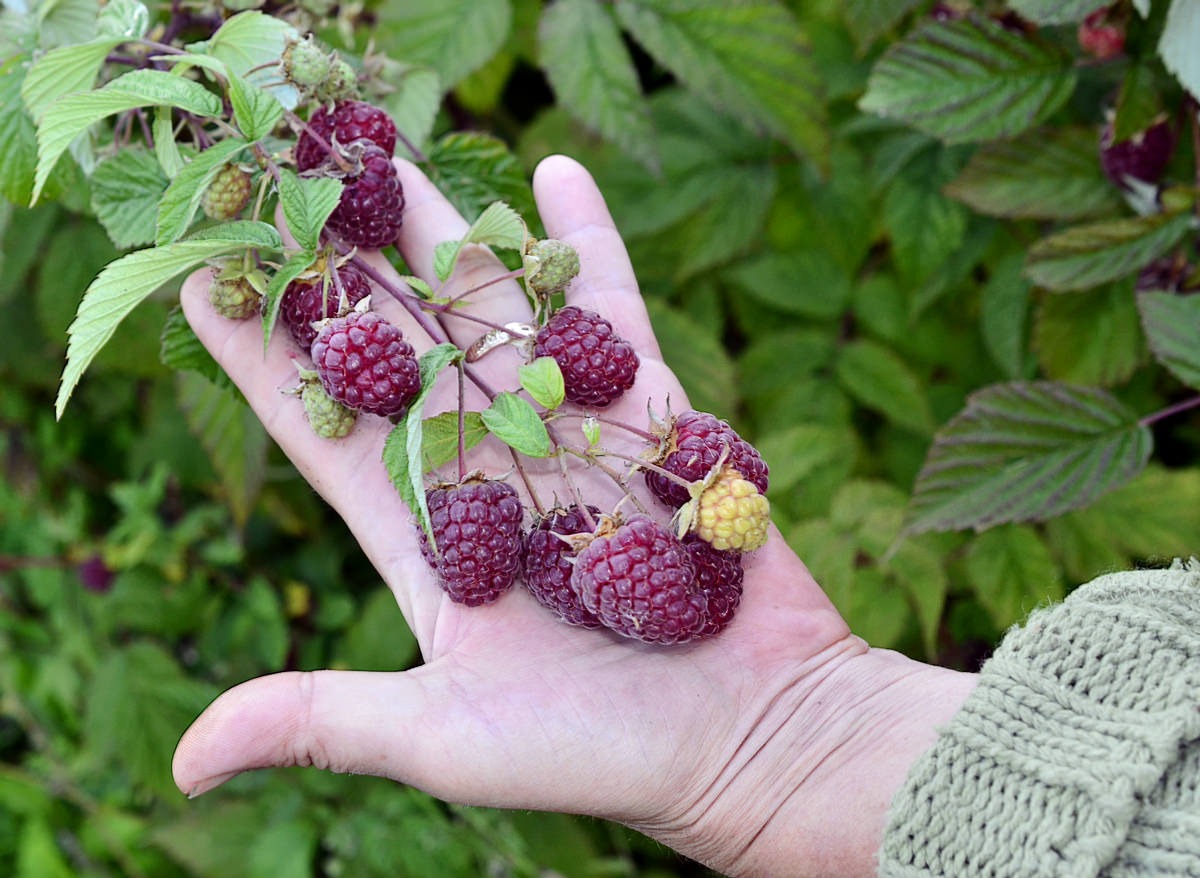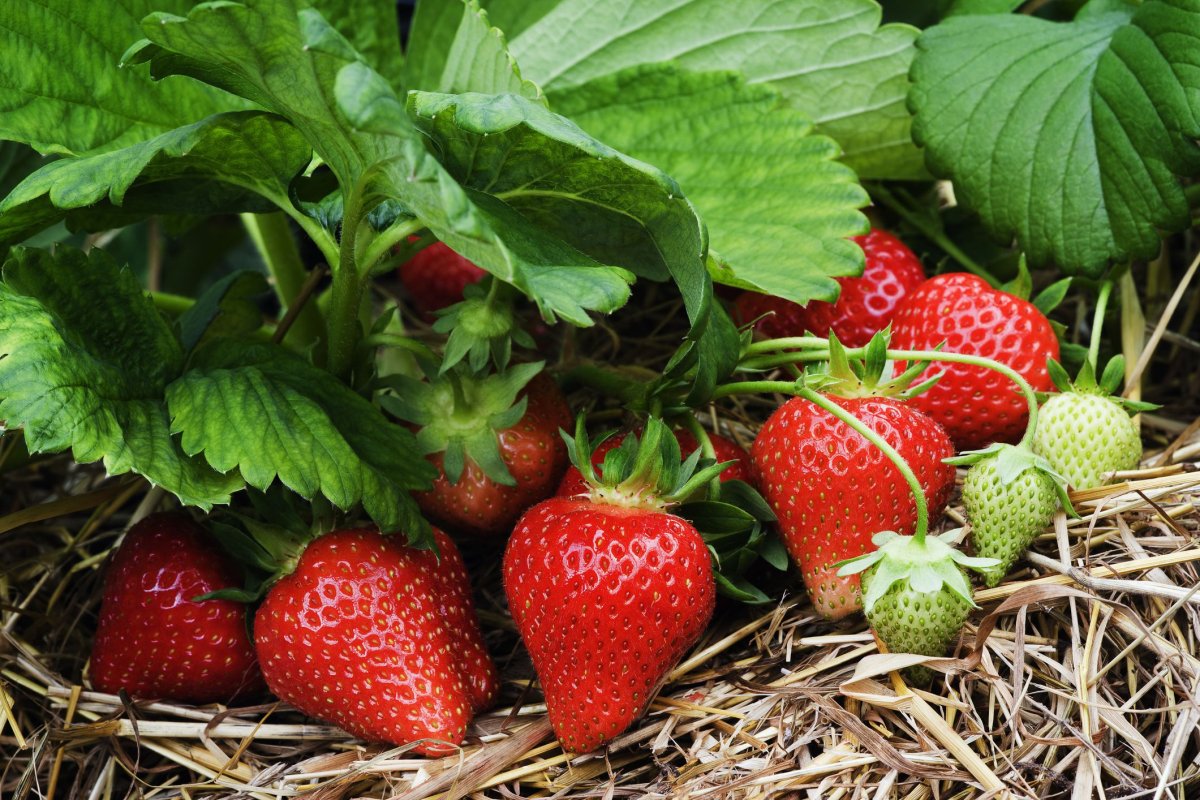The unhurried "life program" of the dogwood requires a lot of patience from the gardener. It will take more than one year before you can taste these wonderful berries. But difficulties often turn out to be far-fetched, and time flies unnoticed, and the plant will slowly take root and will thank for tens of years with a generous harvest.
Content
Growing dogwood
Cornel belongs to the category of plants from which you have to wait a long time for a return. Cultural agrotechnics does not have exotic techniques, does not require special conditions. Most often, the only obstacle to growing dogwood is the lack of planting material.
Choosing a place and a predecessor in the garden
Cornel is a plant of the second tier, growing in the wild under the shade of the forest, on the edges, so it is good to plant it in the aisles of gardens. He will be a good neighbor to every tree. With this planting, the dogwood is protected from direct sunlight, and the free space is rationally used. Only near the walnut will the dogwood be as uncomfortable as any plant. The best predecessors are considered the absence of such.
Dogwood is planted in the manner of an orchard or as a hedge. The plots for it are chosen spacious, because the culture is self-fertile and it is customary to plant several specimens at once. This is the only way that cross-pollination and crop formation occurs. The place should be protected from wind and direct sunlight, but rather bright: near the house it is the south or southwest side. The distance between dogwood bushes is maintained within 5 m.
Bushes planted as hedges are 3-4 m apart from each other.
Soil preparation
Before planting the dogwood in a permanent place, first prepare the soil on an area of 1 m2 under one plant, and only after that they dig a planting hole. Preparatory work is carried out 9-10 months before planting.
Dogwood prefers neutral or slightly alkaline moderately loose soils. Therefore, acidic soils are lime (100-150 g fluff per 1 m2), salted salted with gypsum at the rate of 200-300 g per 1 m2 (one procedure is enough for 5 years). After embedding gypsum in the soil, watering is carried out to a depth of 70 cm.
Dilute sandy soil with clay (5-6 buckets per 1 m2), which retains moisture. To improve the structure of clay soil will help applying for every 1 m2:
- rotted manure or compost (1.5 buckets);
- old sawdust (soaked for 2 weeks in urea at the rate of 150 g of urea + 10 liters of water for 3 buckets of sawdust);
- river sand (2-3 buckets) and peat (9-10 kg).
The earth is dug to a depth of 60–65 cm, along the way choosing the rhizomes of perennial weeds. The excavated square is filled with 4-6 kg of rotted manure and 300 g of complex phosphorus-potassium fertilizer.
Organic matter can be replaced with siderates - peas, rye are sown in autumn, soybeans, mustard, vetch, phacelia are sown in spring, embedding the green mass in the soil.
The groundwater level should be at least 1.8 m from the soil surface. At a higher level, it makes sense to carry out reclamation work.
Planting and transplanting
The best time to plant is October, when the poplars begin to shed their foliage. Dogwood is planted at the age of 2 years, when it already has a strong trunk and developed roots. Planting is carried out by the transshipment method - a gentle method in which the plant does not experience shock, does not need balancing pruning of shoots. If the seedlings need to be taken to the country, the roots are covered with wet sawdust, a cloth. If, nevertheless, the roots are slightly dry, they are immersed in water overnight. Before planting, the root lobe is dipped in a mixture of clay and manure, diluted with water to a creamy consistency with the addition of the Heteroauxin rooting agent (according to the instructions).
A hole in a prepared area is dug 40 cm deep and 60 cm in diameter, and in an unprepared area, 80–100 x 80 cm, respectively.
Planting process:
- The top layer of fertile soil is laid in one direction, the deep layers in the other.
- At the bottom of the pit, a mound is formed from the earth of the upper layer, mixed with 1 bucket of humus. 200-300 g of phosphorus-potassium and 100 g of nitrogen fertilizers are added to the base of the mound.
- Near the wall of the pit, from the side of the prevailing winds, a stake is driven in for a garter.
- Holding the dogwood so that the root collar protrudes from the hole by 3-5 cm, the roots are straightened, evenly spreading along the slopes of the mound.
- Gradually, the hole is filled with the rest of the earth, slightly shaking the seedling to fill the voids between the roots.
- The ground is crushed by the sole along the radius around the trunk.
- Dogwood is tied to a support, watered with 3-4 buckets of water. The earth will settle, the dogwood will sink, and the root collar will be at the right height.
- After watering, the trunk circle is mulched with a thick layer of grass, old sawdust, compost, straw, expanded clay.
You can transplant dogwood older than 5 years. Do not shake off the soil from the roots of a dug plant; on the contrary, it is advisable to remove a whole earthen lump from the pit. This method of transplanting resembles transshipment and minimally traumatizes the root system. The rest of the transfer algorithm is similar to the planting process.
Dogwood care
At first, after planting, the seedling is often watered (since the roots are shallow underground) and shaded from direct sunlight. Watering of adult plants is carried out much less frequently. For seedlings in an open area, you can use a shade net, it is sold in specialized stores. The soil under the mulch is periodically loosened to a depth of 3–5 cm near the trunk and 5–10 cm closer to the edges of the pit, and weeds are removed.
Watering is performed:
- shallow sprinkling;
- into the bowl - the near-trunk circle is fenced off with an earthen roller and filled with water from a hose with a weak pressure;
- into the grooves around the circumference of the trunk circle.
For the winter, the soil in the root zone is covered with earth to a height of 15–20 cm or insulated with a thick layer of leaves and compost. Dogwood stems are wrapped in burlap or agrofibre. Events in different regions are held at different times, depending on the onset of the first frost.
Starting from the third year (on the ground prepared earlier), dogwoods begin to feed. Based on 1 m2 in the fall 30–35 g of phosphorus fertilizers are applied, in the spring - 15–20 g of nitrogen and 10–12 g of potash.
Trimming and shaping
In some cases, pruning of dogwood is mandatory, but in some cases it is purposeful:
- Thinning. This is the main type of pruning. It is carried out before the start of sap flow (in February - March, depending on the region). Branches growing inside the crown, weak, crooked and with defects, broken or rubbing against each other, tops are removed (they are easy to recognize - these are strictly vertical shoots on a branch that do not fit into the overall picture of the crown).
- Anti-aging pruning. It is carried out on 15–20-year-old plants - shortened by 1/3 or cut off old branches growing both outside and inside the bush.
- Formation. Formative pruning is carried out depending on whether the dogwood will grow as a tree or bush. To form a bush, after planting, the seedling is shortened to 40 cm. From the growing shoots, the skeleton of the bush is formed - 3-4 branches are left growing to the side. In the 2nd year, the central shoot (guide) is cut off. To form a trunk, all side branches are cut off from the central shoot to a height of 20 to 40-50 cm above ground level. From 5 to 7 skeletal branches are left for the dogwood, planted according to the 5x5 m scheme, and 2-3 branches in thickened plantings.
Video: pruning dogwood
Dogwood propagation
Dogwood reproduces in several ways, varying in complexity and effectiveness.
Seeds
Seed propagation is a long process and requires constant attention, and the plant will only partially inherit the varietal characteristics of the parent. However, if this is the only way to grow a dogwood, then it's worth a try, but it's better to sow several seeds at once.
The seed propagation process takes place in several stages:
- The seeds are peeled from the pulp and soaked in water for several days before fermentation. They are rubbed with hands and rinsed.
- A small container, for example, a plastic cup, is filled with wet sawdust or moss, seeds are inserted into the substrate. The container is stored in the refrigerator for 1 year, and during this time the substrate is kept moist. This is how the stage of stratification (adaptation, hardening) passes, during which the seeds "get used" to conditions that are as close to natural as possible. After stratification, germination takes 1–1.5 years, whereas in nature it takes up to 2.5 years.
- After a year, the seeds are sown in a box with soil mixture (fertile soil with sand and humus in equal parts) to a depth of 3 cm. Before sowing, the seeds must be warmed up for a week.
- The box is covered with a black film and placed in a warm place until shoots appear, after which it is transferred to the windowsill.
- After the threat of recurrent frosts, the seedlings are planted in open ground.
You can sow dogwood in open ground in early May, arranging a film shelter before germination. Plants are very delicate, so protecting from the sun and maintaining optimal moisture will be paramount. In the first year of life, the seedlings will grow up to 3-4 cm, and in the second year they will stretch up to 10-15 cm. In the first winter, a small dogwood needs shelter - the base of the shoot is covered with earth, the remaining stem is covered with fallen leaves, spruce branches, and snow.
Root offspring
The main task in this case is to carefully dig out the growth so as not to damage either its roots or the roots of the mother plant. The planting pit for the offspring is prepared in advance and the planting process is carried out immediately after digging so that the roots do not have time to dry out. The dogwood obtained in this way will not have varietal characteristics of the mother bush. But it will become an excellent stock on which you can graft your favorite variety.
Layers
This method is used for the bush form of dogwood, in which the side branches are located in close proximity to the ground. The resulting plants retain varietal characteristics. The procedure is carried out in early spring before the buds awaken or in autumn.
Propagation by horizontal layers:
- A 1-2-year-old shoot is chosen, the direction of its growth line is projected onto the ground, so as not to twist the branch once again.
- A groove 15–20 cm deep and shorter than the length of the layering is dug along the growth line.
- Having retreated about 5 cm from the trunk, the twig must be squeezed (ring it with copper wire, tightening it tightly). The cuttings will grow, thicken, the wire will cut into the bark tissue, providing an influx of nutrients primarily to the cuttings, and then to the perennial parts of the bush. The nutrients from the leaves obtained through photosynthesis will remain in the cuttings, stimulating root formation.
- On the part of the shoot, which will be underground, transverse notches are made on the bark with a knife in steps of 3-4 cm. A root system will form in the places of the “cuts”.
- The layering is laid in a groove, approximately in the middle, pinned to the ground with a thick wire bent in a V-shape, covered with earth. The top remains outside.
- Around the buried area of the layering, it is necessary to form a groove for irrigation. Watering should be done as usual, along with the mother bush.
- After 1–2 years, the cuttings will form a root system and can be planted as an independent plant. Such a plant begins to bear fruit in 2-3 years.
Reproduction by arcuate layers:
- At the chosen place (but outside the root circle, so as not to damage the roots), they dig up and fertilize the soil.
- The branch is tilted, pinned to the ground, and in the place where the shoot bends upward, the bark is cut.
- The top of the layering is tied to a vertical support (the branch takes an S-shape), pinched.
- A mound of earth is poured onto the pinned part of the layering.
- After the leaves appear, the layers are sprinkled with fertile soil 2 times with an interval of 2-3 weeks.
- A year later, preferably in spring, you can plant a young sprout of dogwood.
Vaccination
Grafting is great when there is a lack of free space in the garden.
Budding
Budding (or grafting) of varietal dogwood is carried out on a 2-year-old wild stock, which will serve as a “forage base” for the cultivated top. The procedure is carried out in late July - early August (in Siberia it may be mid-July), when the bark is easily separated. The rootstock in your garden can be a dogwood from root shoots and seeds. During the operation, hands, tools and the shoot site where the kidney will be "implanted" should be disinfected. The minimum inoculation height from the ground is 3-5 cm.
Stages of budding:
- To clear the near-stem circle of the stock from weeds, spud it.
- Cut a stalk up to 1 year old from a 3-5 year old bush. The branch should have well-developed buds and strong bark.
- Cut the stalks with leaves from the cutting, leaving small hemp (it is convenient to hold the bud for them).
- Cut off the bud with a thin layer of wood from the middle of the shoot.
- On the rootstock, cut the bark in a T-shape and separate it from the shoot.
- Attach the kidney to the incision, pushing it under the bark.
- Fix the vaccination site with insulation, cover it on top with garden varnish.
Video: summer budding dogwood
Copulation
In simple terms, copulation is when a branch of another variety is added to the branch of a bush of one variety. As a result, there is no need to arrange a variety of plantings for cross-pollination on a small plot, saving years on growing a new variety. Grafted according to the formula 2 in 1, the dogwood becomes, as it were, self-fertile. Copulation is carried out in late March - early April. The main condition for a successful grafting is the same thickness of the rootstock (what is grafted onto) and the scion (what is grafted onto).
Instructions:
- In the middle of the rootstock shoot, an oblique cut is made with a sharp knife to a length of about 4 cm.
- Also, a branch of another variety is cut obliquely, the top is cut off with a pruner (2 buds remain in the middle of the cutting), and it is smeared with garden var (petrolatum). The cut angle must be the same in both cases.
The cut site should not be touched with hands, so as not to clog the vessels through which nutrients move.
- The cut of the scion is placed on the cut of the stock (so that it does not break off later), the junction is fixed with strips of cling film, grafting tape or insulation.
- They put a plastic bag on the grafted branch, fix it, wrap it with a newspaper on top and also fix it. Dual protection creates ideal conditions for the graft for engraftment.
With a favorable result, after about a month, the buds should begin to grow. To check this, you need to carefully remove the newspaper, tear the top of the plastic bag and look inside. If the leaves are already pecking, then the edge of the bag is tied again, but not tight - now it will serve as protection from the sun. When the scion is actively moving into growth, the package should be removed.
Cuttings
A place for rooting cuttings is arranged in partial shade on a fenced area or in a box.
Algorithm of actions:
- Washed river sand is poured into the bottom with a layer of 7–10 cm.
- For cuttings, take green shoots from a dogwood at least 5 years old. In the morning, cuttings are cut 10-15 cm long with an apical bud and one bud on the shoot and 2 pairs of leaves. The cut goes under the lower kidney.
- A longitudinal incision is made from the cut site, not reaching 0.5 cm to the lower kidney, the cuttings are cut into a 3% Heteroauxin solution for 6–12 hours.
- Sections are washed with water, cuttings are planted obliquely in a school or "cuttings" for rooting.
- Shading is arranged on top - they are covered with polyethylene or spunbond on wire arcs, or the cuttings are covered with plastic bottles with the neck up (for convenient ventilation).
- The sand should be moist all the time, and the temperature should not exceed 25oC. When the temperature rises, the school is ventilated by tearing off the polyethylene or unscrewing the bottle caps.
- The rooting process takes 2–3 weeks, after which the plants are hardened for about 2 weeks.
- Then the cuttings are fed with ammonium nitrate at the rate of 30 g per 1 bucket of water. Transplantation to a permanent place is made for the next year.
By dividing the bush
The procedure is carried out in early spring before sap flow or in autumn, at the same time when cornel is usually planted. The plant is dug up, old branches are removed, the soil is gently shaken off from the roots. The bush is cut into equal viable parts, that is, with healthy branches and a sufficient number of roots. Then, on all parts, old roots are removed, the rest are slightly pruned, and in this form are planted in a new place.
Dogwood pests and diseases
Damage to dogwood by sucking and gnawing insects is sporadic, because there are no large-scale plantations in our area. The dogwood butterfly does not bypass its attention, its caterpillars "chew" the leaves. Caterpillars of the pointed-winged moth can live in the leaves themselves. They are so small that they are invisible to the naked eye, and they live inside the leaf. Their presence is indicated by light stripes on the leaves. Micro-moth butterflies lay eggs during the period of flower formation, and hatched caterpillars in summer are mistaken for juicy berries. Spraying with insecticides Aktara, Akarin, Fitoverm in accordance with the instructions or a harmless biological product Dendrobacillin (0.5 g per 1 m2).
Photo gallery: dogwood pests
- A pointed-winged moth caterpillar settles inside a leaf
- Small worm can do a lot of damage
- The caterpillars of the polychrome butterfly eat the leaves
Snail worms, whitish wingless insects, live in Septobasidium - epiphytic fungi similar to lichens on dogwood branches. But, if the mushroom uses the dogwood as a support, then the worms, crawling out of it, suck the juices from the young twigs. Because of this, the shoots are bent, the ovary falls off. Spraying with lime is carried out against the worm (1-2 kg per 1 bucket of water).Lime will additionally protect the plant from overheating and sunburn.
When spraying plants with a lime solution, small holes of a conventional sprayer are clogged with lumps of lime, and therefore it is better not to use it. It is more convenient to make a special baffle plate for the sprayer - a plank. Striking the shield, the jet will take a fan-shaped form, and the lime liquid will fall into an even layer on the plant. When working with quicklime, use glasses.
Traditional diseases of dogwood include:
- powdery mildew - white bloom on all parts of the plant, mostly young bushes are sick;
- rust (usually appears in the middle of summer) - leaves become covered with yellowish and rusty spots that interfere with the process of photosynthesis, lead to the death of leaves and worsen growth;
- necrosis - a fungus pathogen, multiplying on dead branches, affects weakened and damaged shoots.
Photo gallery: signs of dogwood diseases
- Regular inspection will detect powdery mildew at an early stage
- Tree necrosis is treated with amputation
- The age of the rusty leaf is short
In the fight against powdery mildew and rust, spraying with a 1% solution of Bordeaux liquid with an interval of 15–20 days will help (the last treatment is 20 days before harvest). The affected parts of the plant are removed and burned. Another option for spraying against rust is rotted cow dung:
- Pour manure with water in a ratio of 1: 5.
- Insist in a closed container for 1.5–2 weeks, stirring once every 3 days.
- Strain the finished solution (it is ready when the liquid brightens and fermentation is over).
- Dilute half with water.
Timely pruning and incineration of waste will be the prevention of necrosis and a measure to combat rust and powdery mildew.
Features of growing dogwood in the regions
Thanks to reseeding and grafting, the dogwood became stronger and is already able to grow not only in southern, but also in harsh Siberian conditions. In addition, the dogwood cleverly avoids damage from recurrent frosts by closing the flowers for this period.
Central Russia, including the Moscow region
This region is characterized by freezing of the shoots, which have to be cut in the spring. For several years in a row, young plants are covered with burlap, spunbond for the winter, and the trunk circles (regardless of the age of the tree) are covered with a thick layer of mulch from peat and humus. It is preferable to grow early varieties, for example, Volgograd. This is an early ripening variety. The average plant height is 3.2 m. The beginning of the growing season is at the end of March. The fruits ripen at the end of August. They are cherry-colored, elongated-oval, leveled, with an average weight of 1.7–2.2 g. The weight of the seed is 0.2–0.3 g. The yield is 20 kg per bush.
Rostov region
Here, the dogwood grows quite safely practically without freezing and does not require special protective measures. The best varieties for this region:
- Vydubitsky ─ the variety has an annual yield (60 kg). Fruits are large, weighing more than 9 g, do not crumble;
- Vladimirsky ─ pear-shaped fruits are distinguished by high keeping quality. The harvest volume stabilizes by 15–20 years, ripening - at the beginning of September.
Krasnodar region
In the fertile Kuban climate, the dogwood enters the growing season at the beginning of March, and ends flowering in early April. It doesn't matter which variety to plant here - early or late. The main focus is on watering. In the region, common dogwood is often found in bush form or trees up to 8 m high.
Most popular varieties:
- Seeds - late ripening, fruits weighing up to 6.5 g, dark cherry, with a slight sourness;
- Bilda is a bush variety that grows up to 3 m. The crop is harvested in early September. Pear-shaped fruits, universal;
- Amber - attracts attention with unusual bright yellow berries that can be ripened. The variety is drought-resistant.It ripens at the end of August, the tree produces up to 60 kg of sweet berries.
Siberia
With traditional agricultural practices in this region, it is preferable to grow a bush-shaped dogwood. To make it easier to cover the plant with snow in winter, its branches are tilted to one side, pinned to the ground and covered with snow. The specificity of the climate forces us to plant dogwood varieties of early ripening:
- Joy - begins to bear fruit from 3-4 years old, an adult plant gives up to 50 kg of berries. A variety with increased frost resistance;
- Coral - ripens in the 20th of August. Pink-orange fruit-barrels resemble cherry plum in color, sweet. Productivity - up to 40 kg per bush.
Ukraine
In the mild Ukrainian climate, varieties of any ripening period develop well. In the southeast, the critical time is summer dryness, winter frosts are not so severe, but "emergency" mulching will only benefit. Medium varieties that ripen in mid-August - early September are popular here:
- Evgeniya - tree height does not exceed 3-4 m, berries are one to one, pear-shaped, cherry-colored. Up to 50 kg of berries are removed from a 15-year-old tree;
- Kostya is almost black, pear-shaped, with a small stone. Productivity up to 50 kg per tree;
- Lukyanovsky - a classic of the genre - appeared in 1975. Differs in yield, keeping quality and transportability of fruits;
- Kiev bottle-shaped - named after the shape of the berries, large-fruited. From watering, the quality of berries invariably increases, in drought they become smaller;
- Delicate - medium late variety, spreading, yellow berries are similar to droplets, delicate, therefore they are used more fresh.
Belarus
Mild summers and non-severe, although long winters do not greatly limit the range of varieties in terms of ripening:
- Nastya - is distinguished by drought resistance, the fruits are transportable and suitable for use in any form;
- Exotic - large fruits - up to 7.3 g, cylindrical, do not crumble for a long time;
- Elegant - ripens in early August. The fruits are bottle-like, lined, cherry-black in color.
Cornel can become not only the "crown of creations" of your hands. This is a wonderful living legacy for your children, grandchildren and great-grandchildren - eternal within the limits of human life.
